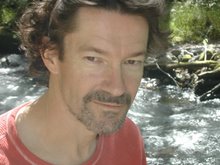The Internet is a remarkable thing. Nothing like beginning a piece with a truly profound insight. In the education world I inhabit these days, the Internet is still viewed with deep suspicion - an enemy of true learning and not to be trusted, a ready source for plagiarism - and I suppose there is some merit in that; but how much is it outweighed by the incredible reach of its resources and its ability to communicate. Even now, there is still something of a wow factor for me in what you can do with it.
For one thing, I was shocked to receive correspondence from a gentleman who had been alerted by my reference to D2Fusion. I really don't know how those sorts of things work. His comments about one of the main protagonists in D2Fusion prompted me to dig deeper into that company. So I visited their website, available here for your interest: http://www.d2fusion.com/index.php?option=com_content&task=blogcategory&id=28&Itemid=57
It all seems so entirely convincing: a polished looking production with a team boasting several impressive (on the surface) resumes. But maybe scratch below the surface. My correspondent noted that one of the team had spent some time behind bars for financial irregularities in Canada but no mention is made on the website of that. One almost gets the impression from reading the thing that cold-fusion powered vehicles are just around the corner. There is made mention of a year end review where different teams gathered "to report on recent breakthroughs in the quantification of their solid state fusion effects, synchronize experiment replication schedules, and coordinate engineering plans for 2007."
Come on. Are we really expected to believe that? I wonder who they are trying to convince more, us or them. We are talking here of a scientific fantasy so discredited, that it was buried without ceremony some 18 years ago. If the proposed technology involved "bubble fusion" I could perhaps understand. After all, that version of cold fusion has only been around for a few years and it perhaps at least had some (albeit tenuous) physical basis, though I cannot claim to have really mastered it. The "inventor" (I use the term advisedly) Rusi Taleyarkhan led the research team at the Oak Ridge National Laboratory; and after claiming victory he was lured to Purdue University. It all seems to have unravelled disastrously amidst an unseemly mess of finger pointing and accusations and counter accusations and rather inept investigations by the university and so on - all chronicled in quite some detail in a recent Chronicle of Higher Education. The same university appears to be locked in a nasty spat over patents with one of its former faculty members on a completely separate issue. Science gets so messy when money or fame enters the frame.
In a nutshell, much as with the other fusion, reproducibility is an issue; much as with the other fusion, the inventor is defensive and uncooperative; much as in the other fusion, there is suspect evidence - in this case something to do with isotopes of californium being responsible for the neutrons measured. I find it remarkable that, given the lessons of CF-1 (I suppose we must number them now) that CF-2 made it so far. But at this stage, it seems that the bubble has definitely burst.
And there seems to be a curiously over-bearing interest of the US Navy in all this, with some of its scientists (at SPAWARS) seeming to corroborate the results of CF-1 and CF-2. I can't decide what their particular angle is on all this.
Scienceblogs is shutting down
8 years ago





2 comments:
Hi Aylwin,
If you are going to critique D2Fusion and Russ George, go for it. Why beat around the bush?
For example, see the five-part New Energy Times investigation here:
http://www.newenergytimes.com/news/2006/NET16.htm#d21
This response to Steven. I had not noticed your previous comment before I had weighed in again on D2Fusion. Returning to the Amoco days, yes we were aware of Lautzenhiser, but we never met with him or discussed the experiments. As I remember, he was not, at that time anyway, an electrochemist, and we were rather puzzled by his intense interest in the phenomenon, particularly since that location was not a research laboratory. His work was at the beginning very under cover.
I imagine my tone must come across as overwhelmingly skeptical, but at the beginning I think we tried extremely hard to be open-minded. There was an early meeting with a gang of top Amoco research people and management who were generally hostile. It was quite difficult to defend the position of treating things on their apparent merit.
I invited a former group member from Oxford, Stephen Crouch Baker, who was then or had recently been with Huggins' group in Stanford. He gave a quite convincing talk on the energy output from cells at Amoco. I lost touch with him, but I think he went to SRI, and there was some report of an explosion with a fatality.
I cannot deny that there are tantalizing aspects to the saga of cold fusion. Nonetheless, even if everything occurs as claimed, will there, can there, be anything in it beyond fascination?
Post a Comment